22+ Sample Request For Quote Templates
-
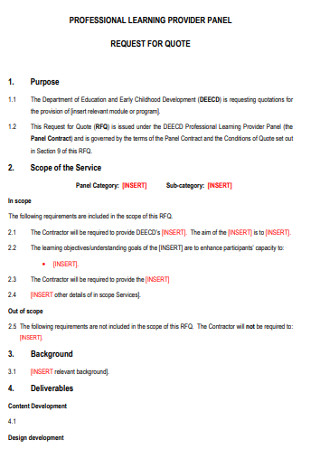
Professional Learning Request for Quote
download now -

Request for Quote Design Template
download now -
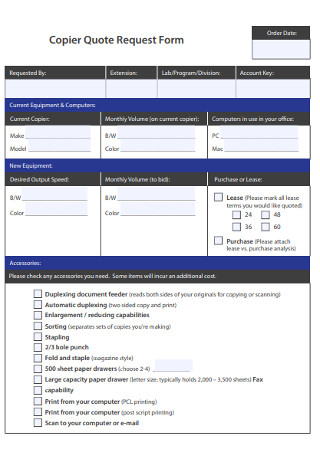
Copier Quote Request Form
download now -

Sample Request for Quote
download now -

Request for Quote and Proposal Template
download now -
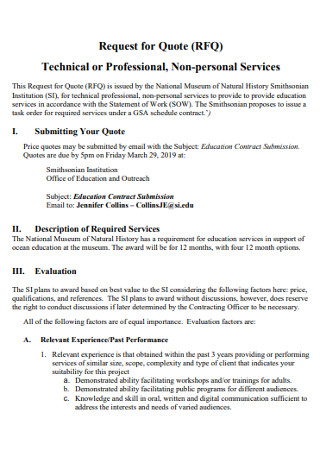
Technical Request for Quote Example
download now -
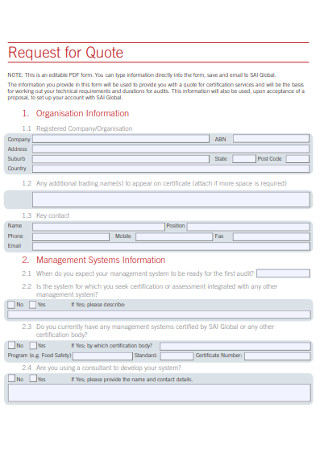
Standard Request for Quote
download now -
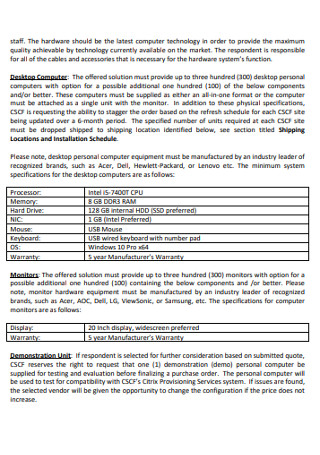
Sales Request for Quote Template
download now -
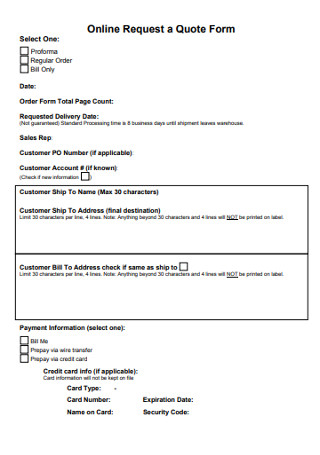
Online Request a Quote Form
download now -
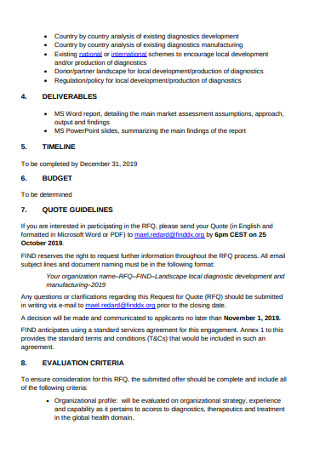
Budget Request for Quote Example
download now -

Request For Quote Service Agreement
download now -
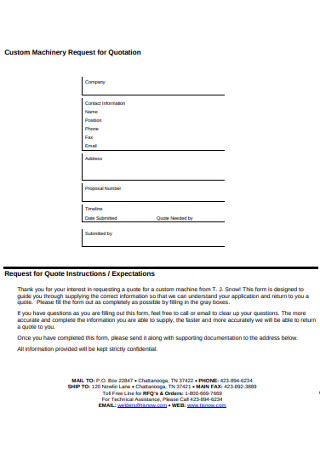
Custom Machinery Request for Quotation
download now -
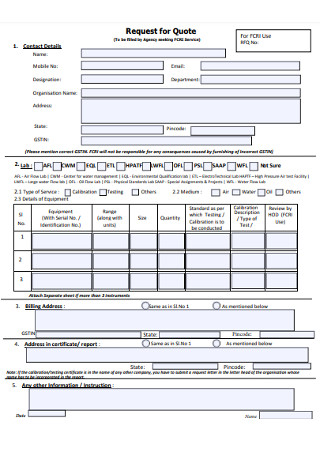
Sample Request for Quote Template
download now -
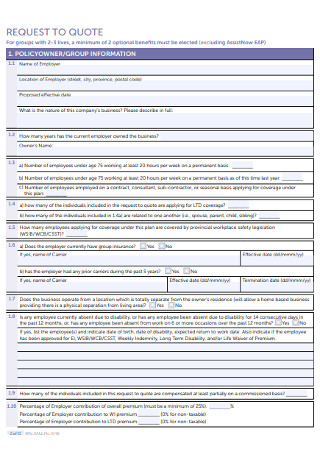
Request for Quote Policy Template
download now -
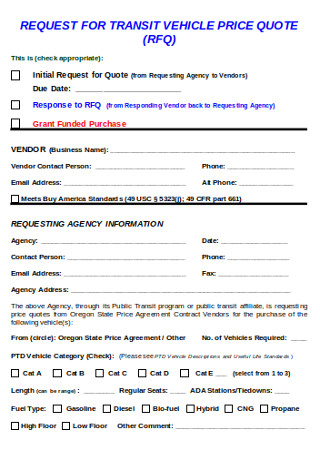
Request for Transist Vehicle Price Quote Form
download now -
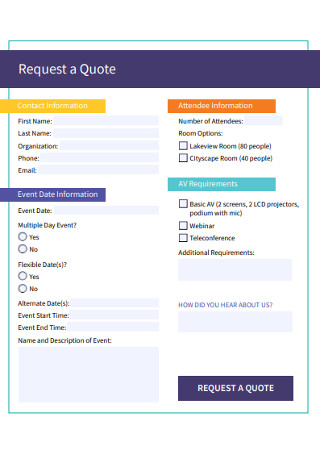
Request a Quote Format
download now -
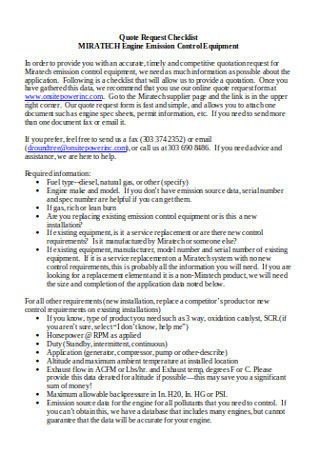
Quote Request Checklist
download now -
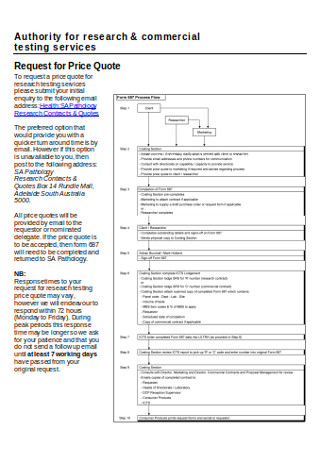
Request for Price Quote
download now -
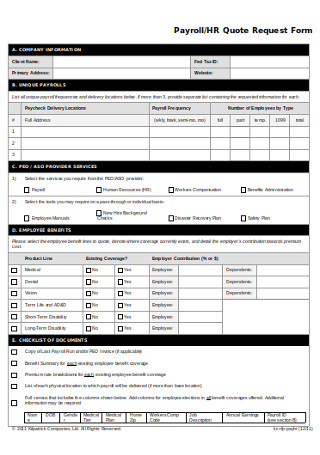
HR Quote Request Form
download now -
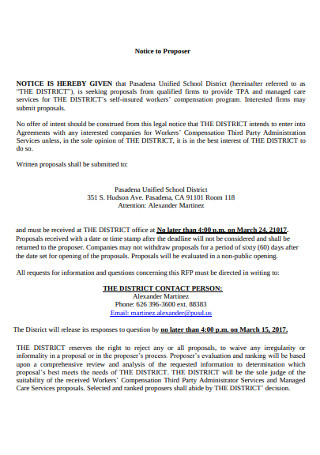
Claims Request for Quote Template
download now -
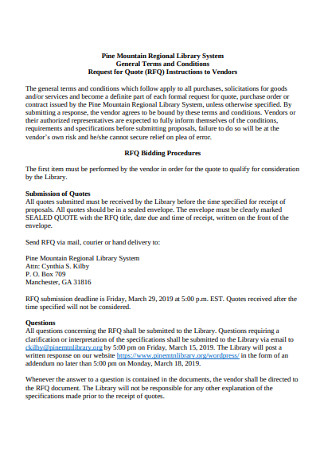
Library System Request for Quote
download now -
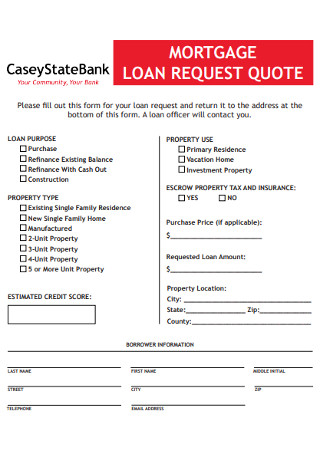
Loan Reqest for Quote Template
download now -
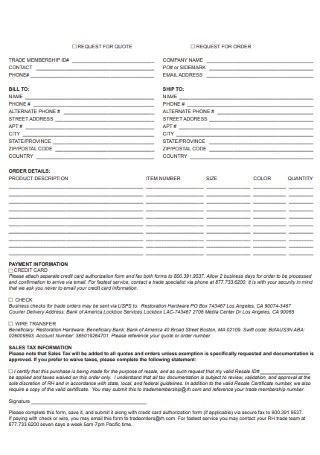
Request Order for Quote
download now
FREE Request for Quote s to Download
22+ Sample Request For Quote Templates
What is a Request For Quote?
When To Use a Request For Quote
How To Prepare a Request for Quote
FAQs
What is a quote in the procurement process?
What is the purpose of requesting a quote?
How does the request process work?
What is a vendor list?
What is the difference between a request for proposal and request for quote?
What is a Request For Quote?
A buyer and a seller (supplier) usually has to go through the “offer stage” before they agree to enter into a purchase agreement. During the offer process, a buyer scouts for who to buy his materials from, so he needs to contact several vendors that offer the items he needs. Once he knows who sells the items, he will send them a letter requesting for a quote. A request for quote is a document that lists down the offered price of the materials a buyer wants to purchase. The supplier is the one who furnishes the buyer with the quotation document, it also serves as an offer to the buyer. As an offer, it may expire at any given time once not accepted by the buyer. Most vendors include in the quotation document date of expiry. The buyer may accept, deny, or counter proposes the offer stated in the quote. When we speak of a counteroffer, it means he may ask the vendor to lower the price (also known in layman’s term as “haggling”). Once both parties have agreed to the terms of the transaction, they may freely enter into a buy purchase contract.
When To Use a Request For Quote
We have established that the procurement process is vital in a business. Using a Request For Quote (RFQ) is not always ideal in all procurement situation. Normally, we only use RFQs when we buy products or items such as equipment, hardware materials, and even office supplies. But we do not use RFQs for the procurement of services (see Contractor Request For Proposal). Before you can use an RFQ, you need to have the following: a list of prequalified vendors, a list of the materials you need to purchase, and a budget. If you have everything in place, it will be easier for you to draft your letter for a request for a quote and send it to the different potential suppliers. In summary, we only need to use an RFQ when we need to procure materials.
How To Prepare a Request for Quote
Purchasing materials for use in business operations takes a huge part in managing a company. According to a 2014 Deloitte survey, around 27% of respondents outsource company materials and issue purchase orders and 30% of the respondents say that they plan to outsource in the future. Buying and selling are intimately intertwined with the business industry, especially for the procurement of the resources they essentially need to operate. Part of this process is interacting and doing business with different suppliers. In business you need a web of contacts, that’s why most companies have their own vendor Contact lists. But for those who do not have such a list or are still in the process of establishing their own, they will still have to go through the process of scouting for suppliers. Once they do find suppliers they can send them a request for quote and find the best vendor who is offering the best price. Below you can find steps that can guide you in the procurement process particularly in requesting a quote.
Step 1: Introduce yourself
The first paragraph of your letter requesting a quote should give a brief introduction of your business, the products or services you are offering, and the client you are catering to. By providing this information, you can give your prospective supplier some context and a basic understanding of what you need in your business that they might possibly provide you. Include relevant background information that will be useful to the vendor in creating his response.
Step 2: Communicate your expectations
It is necessary to include in your letter what you expect from your potential supplier. Consider enclosing submission details of the quote. You can attach a sample quote form if you want a uniform document from different vendors so it will be easy to compare their prices. Provide a deadline and budget you are willing to spend on the materials you want to purchase. This makes it easier for the supplier to give you a price quotation offer. Lastly, provide your contact information in case they may want to ask for questions or clarifications.
Step 3: Be specific about the products you need
This might be the lengthiest part of the quotation formal letter. List down the different materials you want to purchase. Indicate the quality and quantity you need. Be very specific with the products and provide a detailed description of each item. You can even include product pictures or drawings to avoid confusion. If you know the item number, it would be best if you indicate it.
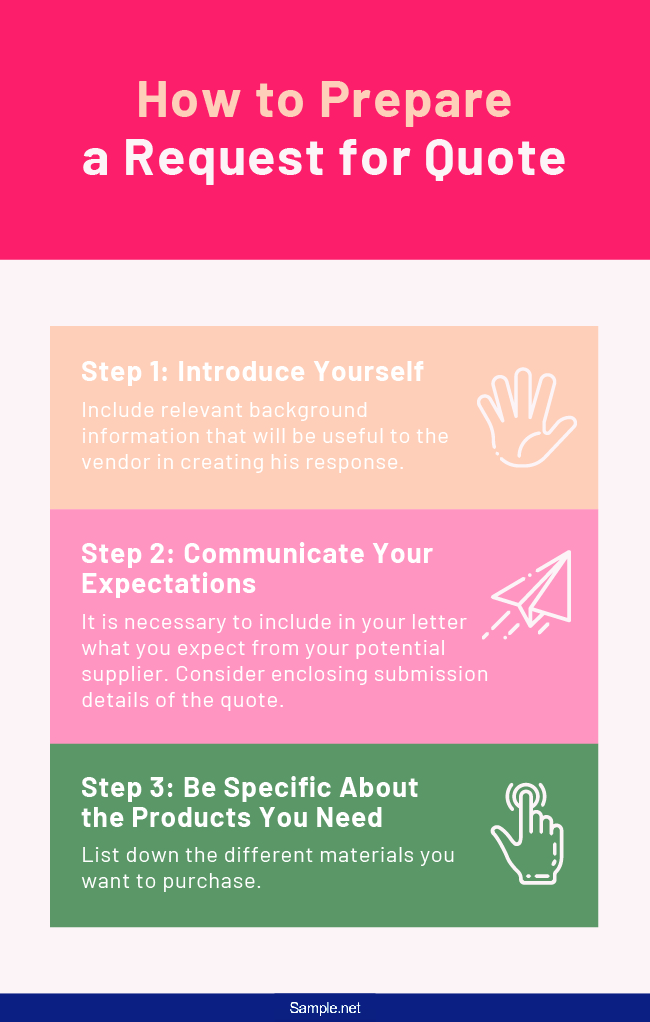
FAQs
What is a quote in the procurement process?
Whenever you need supplies for your business, you will have to scout for supplies from different suppliers. The purpose of inquiring from different vendors is to know who is offering the best possible price in the market. You will have to ask from them a “quote” listing the specific materials you need and the price they are selling it. Basically, a quote is a document that you request from a vendor. The document contains an estimated cost of the materials you want to purchase from him. A quote or quotation form may also include some conditions and warranties attached to it. For example, it may contain a clause of expiry “this quote and the prices stated herein is only valid for and until January 20, 2022. The buyer must signify his intention to purchase within the period”
What is the purpose of requesting a quote?
When you request a quote from a company or business establishment, you are inviting them to bid. What this means is that he will have to compete price-wise with the other different suppliers from your vendor list. The process involves the different vendors submitting price quotes to you for certain items you need in bulk quantity. If you find a quote agreeable to your standards, you may purchase your materials from that supplier. The purpose of requesting a quote is to find the best supplier who can offer agreeable terms and price points for the supplies you need. This is important in order for you to have a consistent supply of a significant number of products that your business needs. Once you find your supplier, you do not need to look for another one. He will consistently supply you with the materials.
How does the request process work?
The first thing you need to do is determine the materials (or services) you need. Consider creating a list of the specific items you need to purchase. Then, you will have to find different suppliers who are offering such products (or services). Gather the names and information of these companies, and create a list. The next thing to do is send them a request for a quote. You will have to write a business letter to the company asking them to provide you a price quote of the specific items you have listed for them or you can enclose a quote form on the letter that they can easily fill-out. Once you have sent them the request letter, you may have to wait for a few days or up until they send a reply to your request. You can send the request letter to different suppliers so you can have a selection of who you want to buy the items from. You can compare the quotes from varying vendors and select the one you most agree with.
What is a vendor list?
If your business constantly needs supplies in order for it to operate, you will need a staple list of suppliers where you get your materials from. Once you have gone through the quotation request process and have found a stable supplier that consistently provides your much-needed supplies, you may include him in your vendor list. A vendor list is a list that your business should have, it a document that has the contact information of your certified suppliers that you have consistently and successfully transacted with from the past and continue to do business with. Whenever you need specific supplies, you can check your list and find a supplier there; this makes the procurement process easier for business establishments. Instead of sending another round of quotation requests to different vendors, you will just have to focus on your vendor list.
What is the difference between a request for proposal and request for quote?
A request for proposal (RFP) may seem similar to a request for quote (RFQ) since in both, you are inviting different companies to take part in the bidding process on who gets to collaborate with you on a project. However this is a large difference between the two. When you send a request for proposal, what you are asking different participant companies is to send you a complete business proposal. If they can successfully work with you on a project. For example, a construction project; you can send a request for proposal to different construction companies and they will reply with a detailed business proposal on how they can successfully do the job. On the other hand, when you send a request for quote, you are merely asking different vendors to send you a price quote of specific materials you need for your business.
Build up your inventory while not breaking your company bank account by choosing the best supplier in the market. Create a request for a quote letter and send it to different vendors and find out who is offering the best price for quality products. Once they send in their price quotations, you can compare each of them from the other. If you find one that attracts you with agreeable terms and price points, you can send them your intention to purchase. You can maximize your business funds by saving money during this procurement process. You just need to properly utilize resources such as requesting for quotations. You can choose from a variety of sample templates for requests for quotes above. It is easy to download in your preferred format; either Microsoft Word or PDF format. You can either print and post mail it to suppliers or email it to them.
